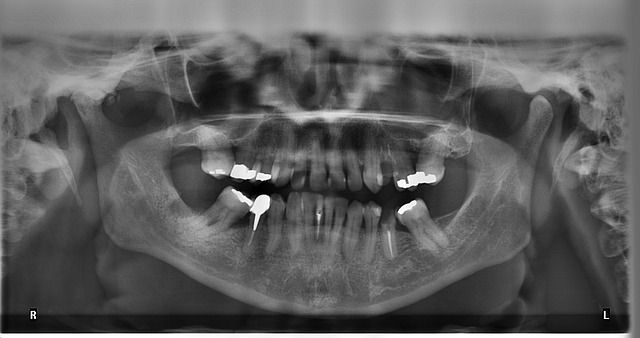Dental x-rays: why are they so important and what are the benefits of digital over traditional varieties?

Almost everyone understands the importance of attending regular check-ups with your dentist. After all, they have the knowledge and equipment to be able to identify and assess potential problems before we even know they exist. However, a large portion of the tooth, including the root, is present below the gum line, meaning that it just cannot be seen by the naked eye. In order to see what is going on below the surface, dental x-rays are necessary.
What are dental x-rays used for?
Dental x-rays are primarily used as a diagnostic and preventive tool. From spotting adult teeth in a child’s jaw bone before eruption, to identifying problems with the root of a tooth, there are many things that a dental x-ray, otherwise known as a radiograph, can spot. They are also often used for assessing bone structure in cosmetic surgery procedures that involve the placement of dental implants. This is because the implants are placed into the jaw bone where they are to fuse with it, and a certain amount of healthy bone is required for the procedure to be successful.
Types of dental x-rays
Bitewing, panoramic and periapical are the most commonly seen x-rays in dentistry.
Bitewing
Bitewing x-rays show the crown part of your teeth and are used to assess them for early signs of decay between them.
Panoramic
Panoramic x-rays are usually taken from the outside of your teeth in order to produce one image of the entire oral cavity. This allows your dentist to identify bone irregularities, cysts, impaction, jaw disorders and tumors.
Periapical
Periapical x-rays are used to assess the bone height of your teeth, or the root tips.
If you are being referred for orthodontic treatment such as braces, your dentist may refer you for cephalometric x-rays. If you have a child that still has developing teeth that your dentist wishes to assess, he/she may be given an occlusal x-ray.
How often will I need dental x-rays?
Every x-ray is performed based on the immediate and future needs of a patient, and as each parent’s oral health is different, it will be down to your dentist to advise you how often you will need to have dental x-rays taken. Although some patients have concerns about the radiation exposure of multiple dental radiographs, steps are taken to minimize exposure and they are considered extremely safe.
What are digital x-rays?
Digital radiographs are a form of x-ray imaging where digital x-ray sensors are used instead of traditional photographic film.
What are the benefits of digital x-rays over traditional radiographs?
Many dentists are moving towards entirely digitized radiographs because of the benefits that this variety of imaging offers. A clear benefit of digital is that it further reduces the risk of radiation exposure, giving off 70% less than traditional x-rays, which is a large concern for many patients. Other important benefits include:
- Immediate processing of the film, meaning that results are available to view instantly.
- Enhancements and a variety of processing techniques to ensure that assessments can be performed with the best accuracy possible.
- Digital archiving means that all the files are stored in one centralized location, making them easily accessible if they are needed in the future. They can also be emailed to anywhere in the world.
Dental x-rays can help your dentist understand the bigger picture when it comes to oral health. If you think you may need an x-ray or you just want to schedule an appointment for a check-up or consultation, contact Barotz Dental, your Dentist in Denver today for a new appointment.






